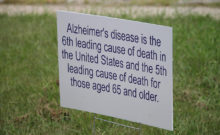Many consumers are understandably concerned about pesticides on their fruits and vegetables. Certain produce has significantly more pesticide residue on them. There is also produce that has a comparatively level of pesticide residue and are considerably safer to eat than the former. Environmental Working Group The nonprofit organization Environmental Working Group put together a list of the top 12 fruits and vegetables with the most pesticide residue. EWG refers to this list as the “dirty dozen.”
In juxtaposition to this list is the “clean 15” which features the produce with the least amount of pesticide residue. EWG understands the public’s curiosity and concerns regarding pesticides on their fruit and vegetables. The compilation of this list was the organization’s response to these concerns and their attempt to inform consumers about the produce that they’re buying. The Dirty Dozen Among the produce with the most amount of pesticides, apples topped the list. Celery then follows at second place. Strawberries come in at third and peaches are at fourth. Spinach ranks as the fifth most pesticide-contaminated produce item. The list continues as follows: imported nectarines, imported grapes, sweet bell peppers, potatoes, domestic blueberries, lettuce, and a tie between kale and collard greens. If you are a frequent consumer of any of these fruits and vegetables, this list is intended to help raise your awareness about the health hazards of what you’re eating. Avoiding or Eliminating Pesticides Many people believe that they can get rid of the pesticides on apples and celery by washing them before they eat them. This is mostly just a myth. Pesticides are absorbed into the entire skin of the produce and cannot be eliminated by simply washing them. In response to this, many people purchase organic fruit, which involves no use of pesticide during their production. The only drawback to this, for many, is how expensive buying organic can be. However, you can effectively avoid high levels of pesticides by sticking with the produce on the EWG’s clean list. The Clean 15 Onions took the top spot in the list of the produce with the least amount of pesticides. Sweet corn came in at second place, followed by pineapples in third. Avocados were listed fourth while asparagus came in fifth. The rest of the list is as follows: sweet peas, mangoes, eggplant, domestic cantaloupe, kiwi, cabbage, watermelon, sweet potatoes, grapefruit and mushrooms. The Environmental Working Group deems these fifteen produce items significantly safer to eat than the ones on the dirty dozen list. They generally pose much less risk to the health of you and your family. Knowing these facts can and should influence your decision making the next time you’re at the supermarket. Although the fruits and vegetables on the dirty dozen list may be the preferred produce of you and your family, you should also consider the potential hazards they pose to your health. If you can’t go organic, sticking with the fruits on the clean 15 list is the best choice to make.


